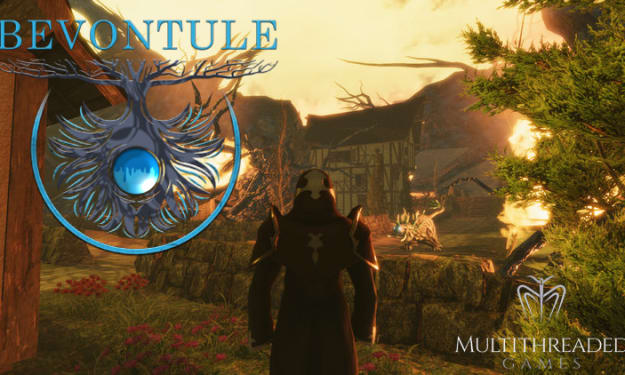The Ghost and the Switch
How Nintendo Taught Me to Eat Crow

Accountability. Without it, my credibility as a writer and, dare I say, a journalist, is left with an aura of decay. That festering cloud will continue to rot and grow until I’m little more than a tabloid artist, spinning improbable tales for the bored and the unemployed. It’s not a future I want for myself, and so I aim to hold myself accountable for my actions, thoughts, and words.
What have I done to warrant such a colorful picture of the possible demise of my career, you wonder? Well, it all started in October of 2016, when Nintendo first announced the Switch. Admittedly, I was less than fair and immediately pegged it as the “Wii U 2.0,” a system destined for failure. So maybe it’s not that terrible of an offense, but, over the console’s first year, I’ve learned a valuable lesson in forming and sharing opinions, judging a book by its predecessor’s cover, and letting my spite control my gut reaction.

Not long before Nintendo unloaded the first details about its hybrid stationary/handheld console, I had come to terms with the fact that the Wii U was entirely lackluster. Even with a library of more than 600 games, a relatively small handful ever really appealed to myself and the larger market. If not for its small selection of first-party releases—around 60 in total—the console would have been nothing but poorly done third-party ports and mostly forgettable indie games. Even with a few gems thrown in, like Shovel Knight, the Wii U’s library was a mess.
I grew displeased and entirely too untrusting of Nintendo, figuring it would never find that ample third-party support from powerhouse publishers and developers. So when the Switch was revealed, I lashed out like a jilted child. Granted, I wasn’t rude about the foul taste that had been left by the Wii U, but I was definitely not a Switch supporter. It wasn’t the design, concept, or lack of comparable power to current gen consoles that bothered me, though. Nintendo was never about trying to compete with the “big boys,” and that, at the very least, I admired. I simply expected the system to fizzle out within the first two years without leaving a lasting impression beyond its core selection of first-party titles.
Then something happened that, in many other scenarios, would have infuriated me—I was proven wrong. Nintendo started scoring deals with companies like Bethesda, and while they were mostly just ports of previously released games, they were titles I (and I’m sure many others) would love to play on-the-go. Skyrim, Doom, Wolfenstein II—these announcements were a big deal for Nintendo and were padded by an already boastful first year that included an incredibly successful Super Mario game, the highly-touted Legend of Zelda: Breath of the Wild, a surprisingly fun collaboration with Ubisoft on Mario + Rabbids: Kingdom Battle, and the multiplayer shooter, Splatoon.

The Switch could survive on ports in a way that the Wii U simply couldn’t, and the bulk of that seems to be due to the system’s handheld functionality. I initially didn’t feel any particular way about taking the Switch on the road, but then I started to see the games in its line-up. My interest in Nintendo’s latest console started to rise when, at the 2017 GameStop Expo in August, I finally got my hands on it.
Much smaller than I expected—a design choice I assume was done due to the poor reception of the Wii U’s brick of a controller—the Switch felt like a delicate, expensive piece of hardware. The first game I demoed was Skyrim, and while the visuals weren’t quite what the PS4 or Xbox One could manage, the gameplay was surprisingly smooth. One thing Nintendo also hadn’t perfected with the Wii or even the Wii U was how to make a port feel like it belonged on the console. For the Switch, even a game as in-depth, big, and complex as Skyrim was at home on the handheld console.
Super Mario Odyssey was the next demo station I hit, and I immediately fell in love. That sounds weird, I know, but the brief, whimsical demo brought me back to the clean, fun days of gaming. I’d spent so much time on the Xbox and PS4 that I had forgotten how much fun Nintendo could be.
Considering how exciting the first year is for the Switch, with its sales on target for the 14 million projected units, there’s little chance its future will taper off and result in another Wii U-like dud. It also helps that Nintendo keeps scoring ports of games like Dark Souls and has a much more active indie market fueling its eShop than its predecessor.

Inside the Gamer's Ghost's Abode
Though I’m not one to enjoy being proven wrong, in this instance, I’ll gladly accept that my initial assumption that the Switch would fail was beyond incorrect. It’s been a year of learning for me as, between this and my original outcry against Resident Evil 7—something I address in my full review—I think I’ve come to be less of a pessimist and accept that, sometimes, a company can pull through for its audience, regardless of transgressions.
Now that I’ve gotten that off my chest, it’s time to return to this marvel of a device. If you’re looking to pad your friend's list, don’t hesitate to add me via Friend Code: SW-6650-2651-4136
About the Creator
Mark LoProto
Writer | Avid Gamer | Horror Enthusiast | A Voice for All Industries
Writing and building communities are my passions
Featured on all corners of the Internet






Comments
There are no comments for this story
Be the first to respond and start the conversation.